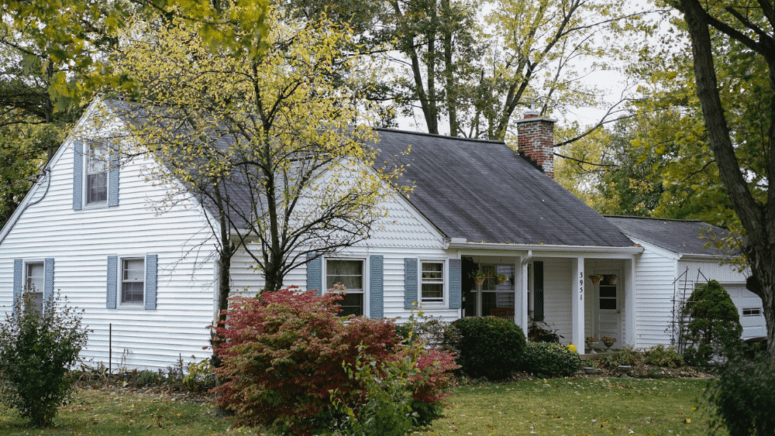FHA Loans and Down Payment Assistance: Making Homebuying Affordable
- Published on
- 13 min read
-
 Mark Henricks, Contributing AuthorClose
Mark Henricks, Contributing AuthorClose Mark Henricks Contributing Author
Mark Henricks Contributing AuthorMark Henricks writes about real estate, homeownership and other topics from Austin, Texas. His byline has appeared in many leading publications. He has authored, co-authored or ghostwritten a dozen published non-fiction books. For relaxation he reads omnivorously, performs as a guitarist and singer, trains for sprint triathlons and disappears whenever possible on whitewater kayaking and wilderness backpacking expeditions.
-
 Fran Metz, Contributing EditorClose
Fran Metz, Contributing EditorClose Fran Metz Contributing Editor
Fran Metz Contributing EditorFran Metz is a freelance content writer, editor, blogger and traveler based in Las Vegas, Nevada. She has seven years of experience in print journalism, working at newspapers from coast to coast. She has a BA in Mass Communications from Fort Lewis College in Durango, Colorado, and lived in Arvada for 15 years, where she gained her experience with the ever-changing real estate market. In her free time, she enjoys 4-wheeling, fishing, and creating digital art.
First-time homebuyers have a big hurdle to clear to get their foot in the door of a home of their very own, and buyers in that situation likely have heard that there’s assistance available to help them reach their goal. The Federal Housing Administration (also known as the FHA) is an agency of the U.S. Department of Housing and Urban Development (HUD) that offers first-time buyer support.
The FHA doesn’t lend money itself. Instead, it insures mortgages made by lenders. The FHA backing lets lenders offer easier credit terms than non-FHA loans.
FHA loans are especially important for first-time buyers. Based on data from a recent U.S. Census report, it’s estimated that more than 10% of all home loans were FHA-backed. More than 80% of those FHA borrowers were first-time homebuyers. First-time borrowers like FHA loans because they are easier to qualify for and let borrowers make lower down payments than some other financing options.
“You don’t have to be a first-time homebuyer to take advantage of FHA,” says Richie Helali, a HomeLight mortgage specialist. “But FHA guidelines are a little more relaxed. If somebody’s credit isn’t strong enough, they may not qualify for another loan. But there’s a chance they’ll qualify for an FHA loan.”
What are down payment assistance programs for FHA loans?
There are literally thousands of down payment assistance programs. Many are small, local operations restricted to a single city or county. All of them have different rules and requirements.
But what down payment assistance programs do is incredibly valuable. They give or loan homebuyers money for their down payments, one of the biggest expenses when buying a house. This helps remove one of the biggest obstacles to homeownership.
And while not every lender works with down payment assistance programs, and some may restrict the amount of the down payment that can come from down payment assistance, FHA loans will allow buyers to use down payment assistance for the entire down payment.
That means if you qualify for an FHA loan and can get into a down payment assistance program, you may be able to move into your new home without having to put a penny into the down payment.
“It’s free money — it’s literally free money,” Helali says of certain types of down payment assistance, such as grants.
Anybody who spends a significant amount of time shopping for a home will hear about FHA loans. Down payment assistance programs, by comparison, are treated like classified secrets. Often, neither lenders nor agents will tell borrowers about the programs. As a result, while as many as 87% of single-family homes may potentially qualify for down payment assistance, just 15% of borrowers apply for assistance.
The National Association of Realtors (NAR) reported that down payments increased last year for both first-time and repeat homebuyers. First-time buyers likely faced the need for stronger offers compared to all-cash buyers, while repeat buyers benefited from increased housing equity. The typical down payment for first-time buyers was 8%.
Who qualifies for down payment assistance?
There are more than 2,000 down payment assistance programs, operated by hundreds of local and state governments, non-profit organizations, and even some commercial businesses. They are available in nearly any location in the country.
And these programs can save you a bundle. Homeowners can save anywhere from $5,000 to $35,000 by using assistance. Nearly $6,000 of that came in the form of cash to make the down payment.
Down payment assistance isn’t available to everybody. While it’s safe to say that each of the thousands of programs has its own rules for who is eligible, here are the typical requirements:
- Just first-time buyers. You need to be buying your first home. In a lot of cases, that means you haven’t owned a home for the previous three years.
- No investors. You can’t own any investment real estate or rental property.
- Owner-occupants only. You have to live in the home as your primary residence for anywhere between 3 and 10 years after the purchase.
- Strictly local. The home needs to be in the city, county, or other geographic area served by the assistance program.
- Financially prepared. Assistance program participants often have to attend a class on personal finance and homebuying.
- Adequate income. The number varies from program to program, but you’ll need a minimum debt-to-income ratio to qualify.
- Solid credit. Many assistance programs require a minimum credit score of 620, but again, this varies between programs.
- Qualifying down payment amount. Most programs have a cap on the amount they’ll give you. This can be either a flat amount or a percentage of the purchase price.
The main types of down payment assistance programs
The thousands of down payment assistance programs offer two main types of assistance: grants and loans. Here are the differences between them and how each works.
Grants
These offer free money. They give you cash for a down payment; you usually don’t have to pay it back. Most assistance comes in the form of grants.
Loans
This approach loans you the money for your down payment. Typically, you take out a second mortgage on the home, and the proceeds of that loan go toward the down payment.
There are a few different ways this can work.
Forgivable loans
Some loans can essentially become grants after a certain amount of time has passed. You borrow money for the down payment, usually at 0% interest. Then, if you meet certain conditions, you don’t have to pay it back at all. Many times, you don’t need to make payments on the loan at all.
One common condition for forgiveness is that you have to stay in the home full-time for a certain number of months or years. If you move, you have to pay it back. If you don’t, the loan is forgiven.
Deferred loans
These are no-interest second mortgages that you do have to pay back — but you don’t make any payments until you move, sell, refinance, or pay off your first mortgage. Then, you use the proceeds from the sale or refinance to pay off the deferred loan.
Low-interest loans
You’ll make payments on this assistance loan monthly from the start, just like with your first mortgage. The kicker is that the loan will carry low-interest rates or even 0% interest.
Matched savings
This approach calls for you to put money into a designated account at a bank or other institution. The assistance agency matches what you put in.
You can then take your contributions, plus the matching funds, to use for your down payment.
With all the variety of assistance programs, these are only general guidelines. For instance, the forgiveness rules can vary quite a bit, Helali says. “These down payment assistance loans may not have a cancellation date. They may say, if in the future you ever sell the place, you have to repay it.”
Can you get down payment assistance if you’re using an FHA loan?
So, how does down payment assistance work with FHA? The answer is: Very well!
That said, FHA loans have their own special requirements that you need to understand to know how to use FHA loans and down payment assistance. Here are some of the basics.
Minimum 3.5% down
The FHA requires at least 3.5% of the purchase price as a down payment. However, unlike with conventional loans, all of the down payment can come in the form of a gift — or, as is relevant for this topic, down payment assistance.
Fair credit
FHA loans typically require a minimum 580 credit score if a borrower wants to put just 3.5% down. If you can put 10% down, a 500 credit score could be enough.
Mortgage insurance
All FHA loans have to carry mortgage insurance to protect the lender against default. This can add up to hundreds of dollars a month to the mortgage payment for the life of the loan.
While the FHA welcomes down payment assistance, not every FHA-approved lender feels the same way. Some lenders don’t offer FHA down payment assistance loans.
Also, many down payment assistance programs require you to work with an approved lender. However, FHA loans are generally approved by down payment assistance program guidelines.
What this comes down to is that you need to find a lender who can handle both an FHA loan and the down payment assistance program. “Just because the county is giving somebody down payment assistance, that doesn’t mean the borrower can go online and search for the best lender,” Helali says. “That lender has to be approved by the down payment assistance program.”
The assistance program is the place to go for guidance on this. “They’ll normally provide you with a list of lenders,” Helali says. “Then that loan officer will be able to help you decide if you want to go FHA.”
Down payment drawbacks
Free money! What could go wrong? Well, there are some downsides to using down payment assistance.
For one thing, you may be required to disclose to a seller that you’re using down payment assistance. That could lead to your offer being rejected in favor of another buyer who is not using assistance, especially if that buyer is putting a larger percentage down.
“From the sellers’ perspective, they’re probably going to choose the other buyer because the programs can make the closing more challenging,” Helali says. “That’s normally the direction the listing agent is going to push the seller.”
Also, having to work with the assistance program means another complication in an already cumbersome mortgage process.
This is not just a hassle for the buyer; it’s also a potential set of frustrations for the lender, which is one reason a lender may not work with down payment assistance programs in the first place.
Another potential downside is the fact that the home has to be your primary residence. And you may have to stay in the home for several years to avoid triggering the payback clause on an assistance loan.
One final limiting factor is that homes have to meet certain price guidelines. Many programs cap the price of the homes eligible for down payment assistance, Helali says. In a place such as the Bay Area in Northern California, where entry-level homes cost in excess of $1 million, down payment assistance programs simply don’t work. “There really aren’t any benefits” for buyers at that price point, Helali says.
Where to find down payment assistance for FHA loans
The large number and diversity of down payment assistance programs can make the task of finding one to work with seem daunting. One good place to start the search is the HUD online database of housing assistance programs.
To use HUD’s list of local buying programs, start by selecting your state. This will produce a list of different categories of resources, including education programs, lists of HUD homes for sale, tips on housing affordability, and more.
On this page, clicking the link to “Assistance programs” will lead to another list of resources, including statewide down payment assistance programs. Clicking on the city where you plan to buy will yield resources applicable to that locale, including down payment assistance programs.
You may also find down payment assistance by checking some of the large, established nationwide programs.
Chenoa Fund
The Chenoa Fund down payment assistance program operates nationally. It is owned by a band of the Paiute Indian Tribe of Utah.
It will fund either 3.5% or 5% of a home’s sale price in the form of a forgivable loan. This is also the minimum required down payment for an FHA loan, so Chenoa works well with FHA borrowers.
Unlike many down payment assistance programs, Chenoa assistance is not only for first-time buyers. Eligible participants are creditworthy low- to moderate-income borrowers.
National Homebuyers Fund
National Homebuyers Fund is a non-profit that will provide up to 5% of a home’s sale price to use for the down payment and closing costs. The funds may be grants or forgivable second mortgages. The program assists low- and moderate-income borrowers nationwide, and it isn’t restricted to first-time buyers.
Bank of America
Bank of America’s Our Down Payment Grant program provides up to $10,000 or 3% of the home purchase price to be used as a down payment.
The grants don’t have to be repaid. However, Our Down Payment Grants are only available in certain markets and with specific home loans.
Chase Bank
The Chase Homebuyer Grant can provide $2,500, $5,000, or $7,500 toward the purchase of a primary residence. The money first gets applied to discount points on the loan, then fees, and if anything is left, that can go to the down payment. It’s only available in certain locations, and borrowers have to meet income limits. However, the grants don’t have to be repaid.
Work with the right agent and lender
When you are pairing an FHA loan with down payment assistance, it’s important to find an agent and lender willing and able to work with both of these programs.
“It is definitely an underused resource,” Helali says. “Partly, it’s because people may not know about it, or they may be working with a real estate agent who’s unfamiliar with it.”
The best way to find an agent and lender who can help with an FHA loan using down payment assistance is to find one of each that has experience with these programs.
Other low down payment options
While down payment assistance programs can be a big help, they are not the only low down payment options. Here are some others:
- Conventional loans. Some conventional lenders will make loans with as little as 3% down under the Conventional 97 program offered by government-sponsored enterprise Fannie Mae and the HomeOne program by Freddie Mac.
- VA home loans. The Department of Veterans Affairs can provide 0% down loans to eligible veterans and active service members.
- USDA loans are also available with 0% money down in geographic areas designated as rural. Borrowers have to meet income limits.
Summing up FHA loans with down payment assistance
Down payment assistance, in general, is underused, and the programs often work well with FHA qualifying loans. However, not every borrower is a good fit for down payment assistance or an FHA loan. To make sure you’re accurately evaluating whether it’s the best choice for you, it’s important to work with an agent who knows how these products work together.
If you are a homebuyer who suspects that you may be eligible for down payment assistance, but your agent says the programs are too complicated or assures you that you won’t qualify, that could be a red flag.
“That means it’s not the right agent for that client,” Helali says. “That client needs an agent who knows the ins and outs of down payment assistance.”
Header Image Source: (Alejandra Cifre González / Unsplash)
- "FHA Mortgage Insurance: What It Is and How Much It Costs", LendingTree (April 2023)
- "FHA Loan Requirements 2024", TIME (August 2024)
- "2023 PROFILE OF HOME BUYERS & SELLERS", National Association of REALTORS® (November 2023)
- "Expanding Down Payment Assistance Awareness Could Help More People Afford a Home", Urban Institute (December 2023)
- "Share of FHA-Backed New Home Sales Climbs in Q1 2023", National Association of Home Builders (April 2023)






